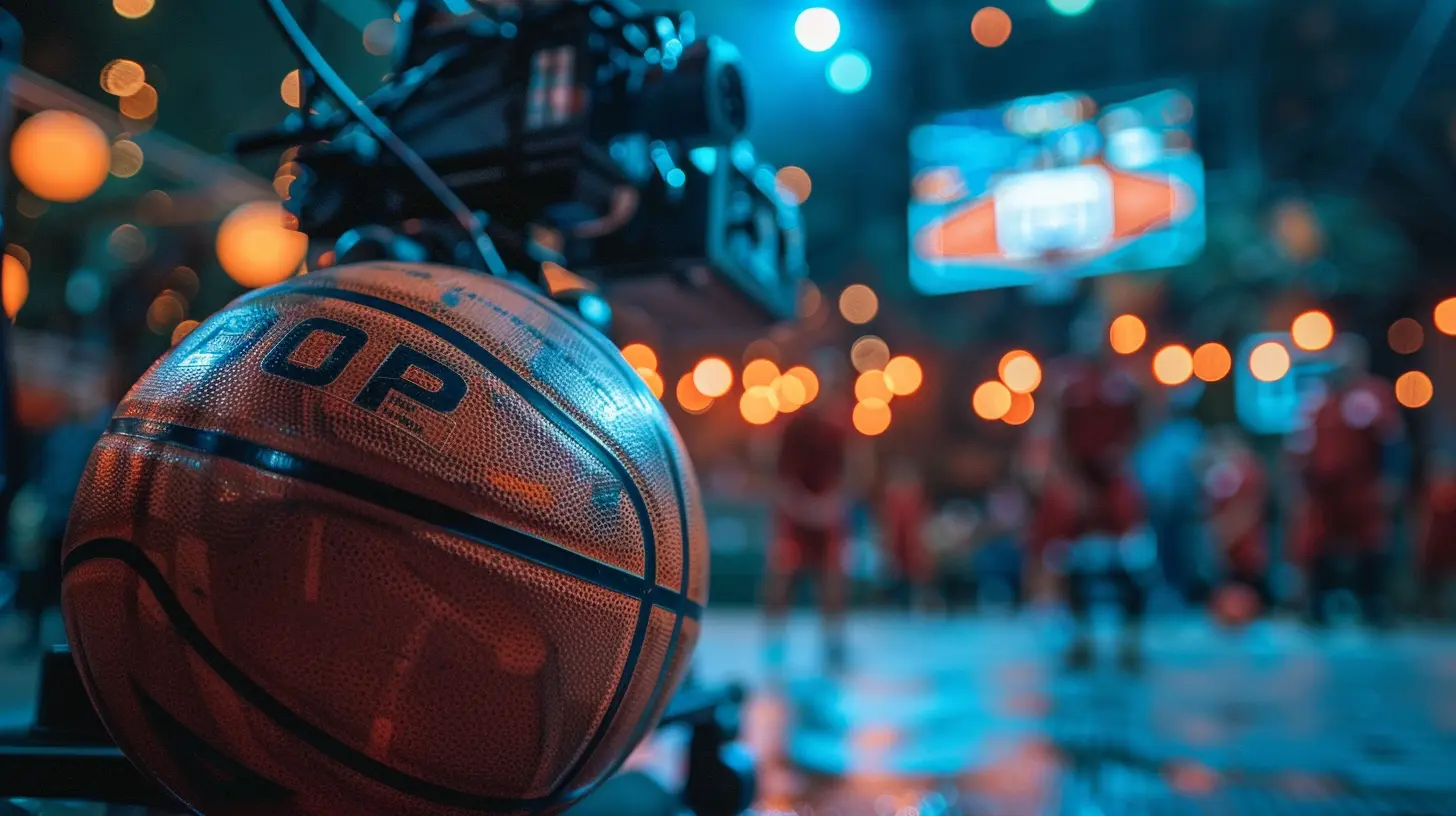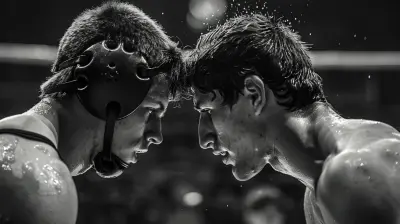Sports Broadcasting in Different Cultures: A Global Perspective
30 July 2025
Let’s be real — there’s something magical about watching a game live. The commentary, the roar of the crowd, the last-minute goals or buzzer-beaters — it’s the stuff that makes your heart race. But here’s the twist: not everyone experiences sports the same way. Around the world, sports broadcasting taps into the soul of different cultures, mixing tradition, tech, and raw emotions into one amazing spectacle.
So, grab your jersey and favorite snack, because we're about to take a world tour of how sports hit the airwaves differently across the globe. You’ll be surprised by what’s considered hype-worthy in one country and barely a blip on the radar in another.
Let’s Start with the Basics: What Is Sports Broadcasting, Really?
Okay, okay, before we go globe-trotting, let’s break it down. Sports broadcasting is basically how games, matches, and tournaments are shown to the public — through TV, radio, streaming, or now even TikTok. It’s not just cameras and microphones, though. It’s about storytelling, energy, and connecting fans to the game, even if they’re a thousand miles away.And trust me, how this story is told? That’s where cultural flavors really kick in.
United States: The Land of HD Replays and Dramatic Commentary
Ask any American sports fan, and they’ll tell you — watching a game here feels like going to the movies. Think booming voiceovers, slow-motion replays, on-screen graphics that look like a video game, and commercials that cost millions. The U.S. has truly turned sports broadcasting into an entertainment juggernaut.Key Traits:
- High production value: Multi-camera angles, stat overlays, and flashy intros.- Emphasis on personalities: Think color commentators, analysts, and ex-athlete insights.
- Play-by-play energy: Every moment is hyped, even the coin toss.
Oh, and those Super Bowl ads? People watch the game just for them. That’s how seriously broadcasting is taken here.
Japan: Precision, Respect, and a Love for the Technical Side
Flip the channel to Japan, and the vibe is totally different. Japanese sports broadcasting mirrors the culture — respectful, detail-oriented, and deeply passionate.What Stands Out:
- Politeness in commentary: No shouting matches between commentators here.- Focus on form and discipline, especially in sports like baseball and sumo wrestling.
- Graphics and data galore: Sporting broadcasts often include detailed analysis and player breakdowns.
And get this — even the cheerleading and crowd behavior is highly organized. Sports in Japan are as much about harmony as they are about competition.
United Kingdom: Witty Banter and Dry Humor Rule the Airwaves
Over in the UK, sportscasting is all about charm and clever commentary. Whether it's Premier League football or a dramatic day at Wimbledon, British broadcasters bring a mix of history, humor, and heart.Signature Style:
- Iconic voices: Think of legends like Martin Tyler — they’re practically sports royalty.- Focus on traditions: You’ll hear broadcasters referencing decades-old matches mid-commentary.
- Understated enthusiasm: Brits love sport, but they rarely overhype. It’s more suave than shouty.
And don’t forget, in the UK, sports like cricket can last five days. That means broadcasters have mastered the art of stretching small moments into drama.
Brazil: The Soundtrack of Passion and Samba Vibes
If there’s one thing Brazilians know how to do, it’s bring the heat — both on the field and behind the mic. Soccer isn’t just a game in Brazil; it’s a way of life. And that energy explodes through the screen when a match is being called.What’ll Catch Your Ear:
- Electrifying commentators: They don’t just narrate the game — they live it.- Iconic "GOOOOOL!" calls that last as long as your breath can hold.
- Music and crowd involvement: Drums, chants, and dancing in the stands all make it into the broadcast.
Brazilian sportscasting feels like a street party with a mic — and honestly, that’s what makes it unforgettable.
India: Cricket, Commentary, and Cultural Explosion
India and cricket are like peanut butter and jelly. The sport dominates the airwaves, and broadcasters go all out to make sure you feel every sixer and wicket.Unique Features:
- Bilingual broadcasts: Games are often aired in multiple languages — Hindi, Tamil, Bengali, you name it.- Star-studded commentary: Former players become national heroes in the commentary box.
- Emotional storytelling: Broadcasters often tie sports outcomes to greater narratives—political, emotional, or even spiritual.
And yes, during major tournaments like the IPL or World Cup, the country basically pauses life to tune in.
Africa: A Rich Blend of Local Flavor and Growing Tech
Africa is one of the most diverse continents, and its sports broadcasting reflects that beautifully. While soccer reigns supreme, many nations also embrace athletics, rugby, and cricket — each with its own broadcasting flavor.Emerging Trends:
- Rising digital platforms: With mobile viewership on the rise, more fans are streaming games on phones than TVs.- Community-driven commentary: Often rooted in local dialects and close-to-home storytelling.
- Youth engagement: Shows and broadcasts tailored for the younger generation are booming.
Sports coverage here often doubles as cultural expression. Tuned-in fans get more than a game — they get a piece of the local heartbeat.
Middle East: A Fusion of Tradition and Modern Sports Fever
Sports broadcasting in the Middle East is a fascinating clash of old-world values and new-world glitz. With networks like beIN Sports dominating the landscape, broadcasting here is polished, professional, and passionate.What’s Special:
- Football fever is real, especially with big clubs from Europe having massive followings.- Bilingual or trilingual coverage: Arabic, French, English — all in one sports broadcast.
- Gender dynamics are shifting: More women are hosting and analyzing games, marking a significant cultural shift.
Also, the World Cup 2022 in Qatar brought a massive boost in sports broadcasting quality and global recognition for regional talents.
Australia: Laid-Back Vibes with Hardcore Commentary
Down under, sports broadcasting feels like talking to a buddy over a cold one. Aussies love their sports — from cricket and rugby to Aussie Rules football — and their commentary is equal parts chill and passionate.Local Quirks:
- Tons of slang and local references. If you’re not from there, good luck keeping up!- Strong emphasis on mate-ship and sportsmanship.
- Coverage that blends beach-town energy with sharp insights.
Australian broadcasters make sure you’re in on the fun, even if you don’t understand every term they throw at you.
South Korea: High Energy with a Tech Twist
Korea’s known for K-pop and kimchi, but sports broadcasting? It’s no slouch either. With esports becoming almost mainstream, Korea is redefining what "sports" even means.Cool Bits:
- Esports get prime-time coverage and are treated like traditional sports events.- High-energy, fast-paced game commentary — especially for baseball and soccer.
- Tech-savvy production: Augmented reality, real-time data, and amazing graphics are almost standard.
Korean sports broadcasts feel like being inside a high-speed bullet train — but make it sporty.
How Culture Shapes Sports Broadcasting
So, why all the differences?Simple: Culture is the lens through which sports are viewed. It shapes everything — from who gets airtime, to how games are framed, to what even qualifies as a sport worth broadcasting. Some cultures see sports as war minus the bullets. Others see it as a dance between teams. Some treat it as a sacred ritual. Others, just a good time with friends and food.
Broadcasting doesn’t just show sport — it tells the cultural story behind it.
The Future of Sports Broadcasting: A Mash-Up of Everything?
Here's the fun part — we’re seeing cultures blend. With social media, YouTube, and international streaming services, fans are now exposed to multiple styles of sports broadcasting. Want British wit with American flash? Malaysian football with Brazilian commentary energy? It’s out there.The more this cross-pollination happens, the richer our global sports-watching experience becomes.
Imagine a world cup where the commentary is a mix of Spanish flair, Japanese discipline, and African soul. Sounds wild? That’s exactly where we’re headed.
Final Whistle Thoughts
From samba-shouting in Rio to analytical cricket chats in Delhi, sports broadcasting is one of the most fascinating windows into a culture. It’s how nations express joy, pride, heartbreak, and unity — all through the lens of sport.Next time you tune into a game, try flipping the audio to another country’s commentary, even if you don’t speak the language. You'll instantly feel the shift in energy, values, and approach.
Sports may be the same game globally, but the way it's told? That's beautifully different.
all images in this post were generated using AI tools
Category:
Sports BroadcastingAuthor:

Frankie Bailey
Discussion
rate this article
1 comments
Andrew McMahan
This article highlights the diverse approaches to sports broadcasting worldwide, illustrating how cultural values and technological advancements shape audience engagement and content delivery across different regions.
August 22, 2025 at 3:36 AM

Frankie Bailey
Thank you for your insightful comment! I'm glad the article resonated with you and highlighted the influence of culture and technology in sports broadcasting.


